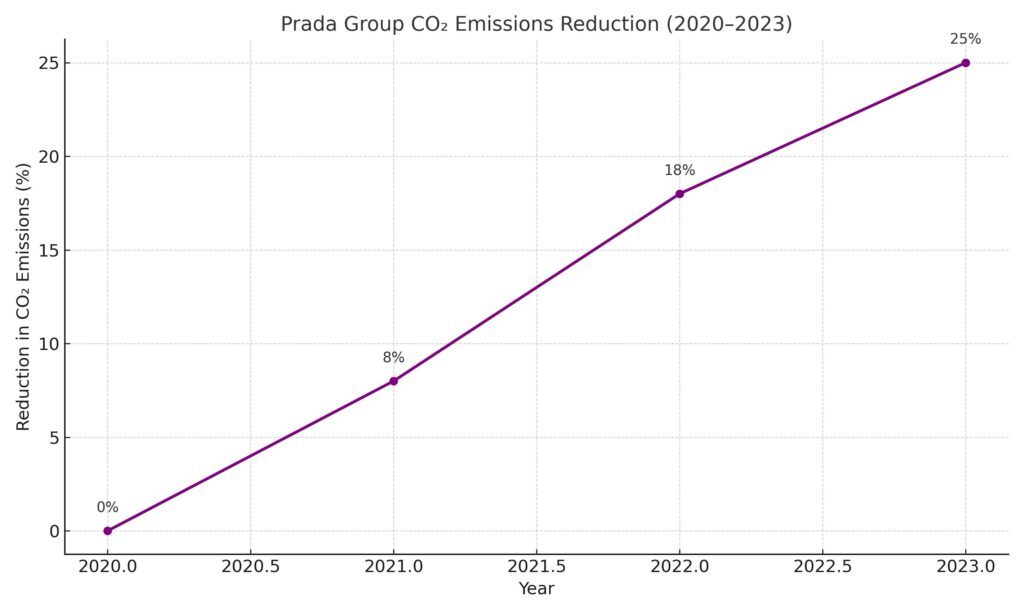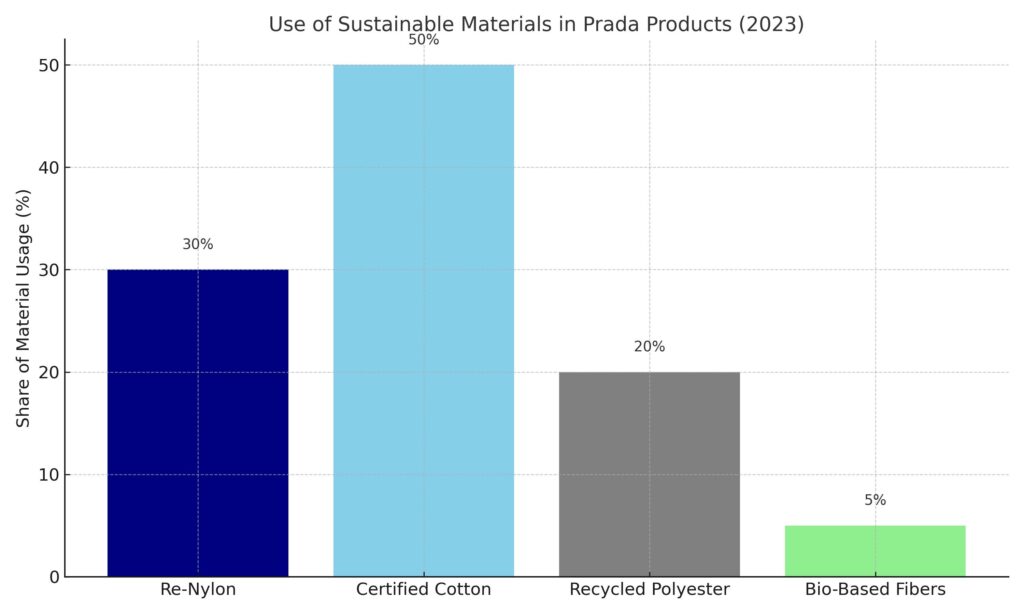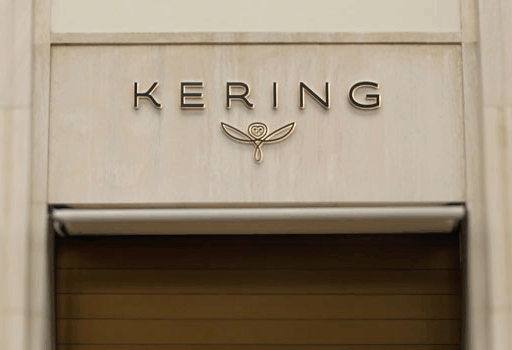The Prada Group, an emblem of luxury fashion rooted in Italian heritage, is undergoing a comprehensive transformation toward environmental and social responsibility. While luxury has historically centered on exclusivity and craftsmanship, Prada is demonstrating that luxury can also mean leadership in sustainability. With growing global expectations from regulators and ethically minded consumers, Prada is reengineering not just its materials but its entire business model—from supply chain to circularity to climate targets.
Prada’s 2023 Sustainability Report emphasizes systemic change over symbolic action. The group is focused on decarbonization, circular fashion, inclusive leadership, and traceability, while leveraging its brand equity to influence the broader luxury industry.
Sustainability Strategy and ESG Framework
Prada’s strategy is organized into three pillars:
- Environmental Responsibility
- People and Culture
- Ethics and Governance
Each aligns closely with global sustainability frameworks such as the UN SDGs, Science-Based Targets initiative (SBTi), and the Fashion Pact.
Net Zero and Carbon Emissions
Prada aims for net zero by 2050, with interim targets to reduce Scope 1 and 2 emissions by 29% by 2026. This includes direct emissions from operations and indirect emissions from electricity use.
- Between 2020 and 2023, Prada cut emissions by 25%, supported by:
- Energy audits and efficiency upgrades in all European manufacturing sites
- Transitioning to 65% renewable electricity across global operations
- Green-certified store refurbishments and solar installations at tanneries
The company has also joined RE100, committing to 100% renewable energy by 2025.

Water Stewardship
Water risk is a key challenge in textile and leather production. Prada is focusing on:
- Closed-loop water systems in tanneries, reducing water intake by 18% since 2021
- On-site water treatment and filtration to prevent contamination
- A target to cut water use per unit by 15% by 2025
Sustainable and Circular Materials
Circularity is no longer aspirational—Prada is scaling it commercially:
- Re-Nylon is the cornerstone of this strategy: made from ocean plastics, textile waste, and fishing nets.
- 2023: 30% of nylon products were Re-Nylon
- Target: 100% by 2026
- Other material achievements:
- Certified organic cotton now used in 50% of garments
- Recycled polyester accounts for 20% in selected outerwear
- Bio-based fibers (e.g., agricultural waste) now in 5% of collections via pilot projects
Prada’s material innovation lab in Arezzo is exploring biodegradable, cruelty-free, and low-emission textile alternatives in collaboration with European universities.

Packaging and Waste Management
Prada’s packaging redesign has reduced environmental impact without sacrificing aesthetic value:
- 80% of all packaging is now FSC-certified and recyclable
- Eliminated single-use plastic in e-commerce and retail packaging
- Expanding garment reuse trials with resell and donation partners in Milan and New York
Human Rights and Gender Equity
With a workforce that’s 72% women, Prada is reshaping corporate power dynamics:
- In 2023, 62% of leadership roles were held by women
- Launched the Diversity & Inclusion Advisory Council, chaired by Professor Ava DuVernay and supported by NYU faculty
- Enforces a Global Code of Ethics in all Tier 1 and Tier 2 supply partners
Supply Chain Ethics and Transparency
Prada’s sourcing is built on verified traceability:
- 100% of leather sourced from Leather Working Group (LWG)-certified tanneries
- Blockchain pilot projects underway to trace cotton and wool origins
- Supplier audits expanded to cover labor, emissions, and water use across Tier 2 and Tier 3 vendors
Measurable Impacts
| Metric | 2023 Status | Target |
|---|---|---|
| CO₂ Emissions (Scope 1 & 2) | -25% from 2019 baseline | -29% by 2026; Net Zero by 2050 |
| Renewable Energy Use | 65% | 100% by 2025 |
| Re-Nylon Products | 30% | 100% by 2026 |
| Certified Organic Cotton | 50% usage in cotton collections | Annual increase |
| Recyclable Packaging | 80% FSC-certified or recyclable | 100% by 2025 |
| Women in Leadership | 62% | Maintain ≥60% |
Challenges and Areas for Improvement
While Prada is outperforming many peers in areas like Re-Nylon and leadership equity, critical gaps remain:
- Scope 3 emissions (product use, third-party logistics, upstream raw material production) represent the bulk of its footprint and are yet to be fully measured or addressed.
- Circular programs (resale, repair, rental) remain limited in scale and geography.
- Biodiversity impacts of wool and leather production require clearer metrics and offset plans.
Future Outlook and Roadmap
Prada’s future roadmap reflects a shift from compliance-driven reporting to impact-centered transformation:
- Expand Re-Nylon across all product categories and develop closed-loop recycling facilities.
- Implement AI-powered forecasting to reduce overproduction.
- Use environmental profit and loss accounting (EP&L) to guide decisions.
- Scale customer-facing transparency—via QR codes or blockchain—to trace material origins and emissions by 2026.
- Launch carbon neutral collections by 2028 with verified third-party certification.
Competitor Comparisons
| Brand | Circular Collection | Net Zero Target | Women in Leadership | Traceability Depth |
|---|---|---|---|---|
| Prada | Re-Nylon (30% → 100%) | 2050 | 62% | Piloting blockchain |
| Gucci (Kering) | Off The Grid, Continuum | 2030 | 60%+ (Kering group) | Strong (EP&L system) |
| Louis Vuitton | Small-scale pilots | No formal target | Not reported | Weak Tier 2+ reporting |
Prada is no longer simply responding to sustainability trends—it is setting them. By investing in material innovation, decarbonization, and circular design, the brand is shifting from heritage-led to purpose-led luxury. Its Re-Nylon program, female leadership, and carbon reduction show that style and sustainability can co-exist. However, scaling impact in biodiversity, Scope 3 emissions, and global circularity programs will determine whether Prada becomes a true leader or symbolic participant in the transition to sustainable fashion.
Sources
Prada Group Sustainability Report 2023: https://www.pradagroup.com/en/sustainability.html
RE100 Corporate Commitment: https://www.there100.org/
Leather Working Group Standards: https://www.leatherworkinggroup.com
Kering Group Sustainability Framework 2023: https://www.kering.com/en/sustainability/
LVMH Environmental Report 2023: https://www.lvmh.com/group/lvmh-commitments/environment/
Fashion Pact Members and Goals: https://www.thefashionpact.org/





